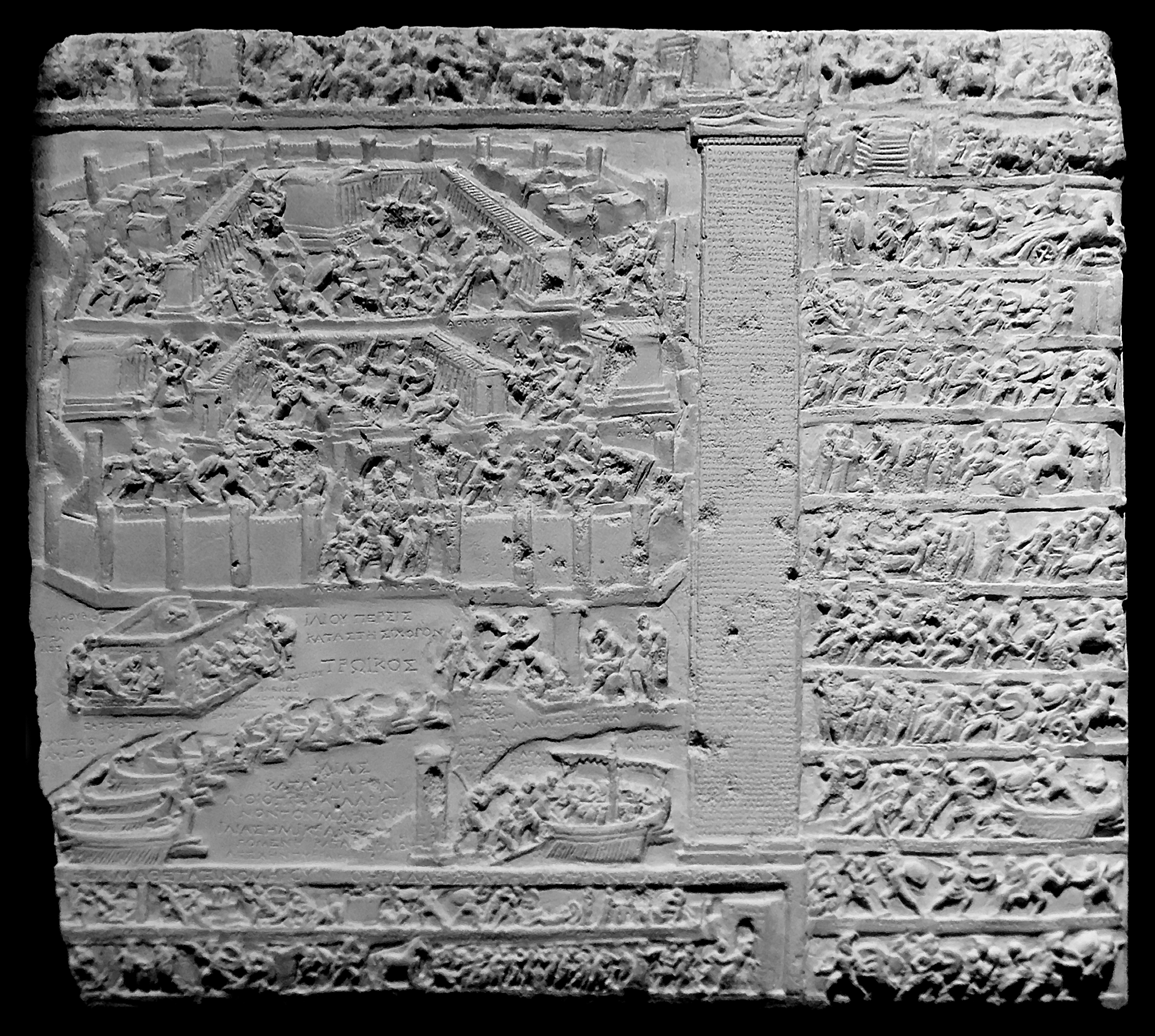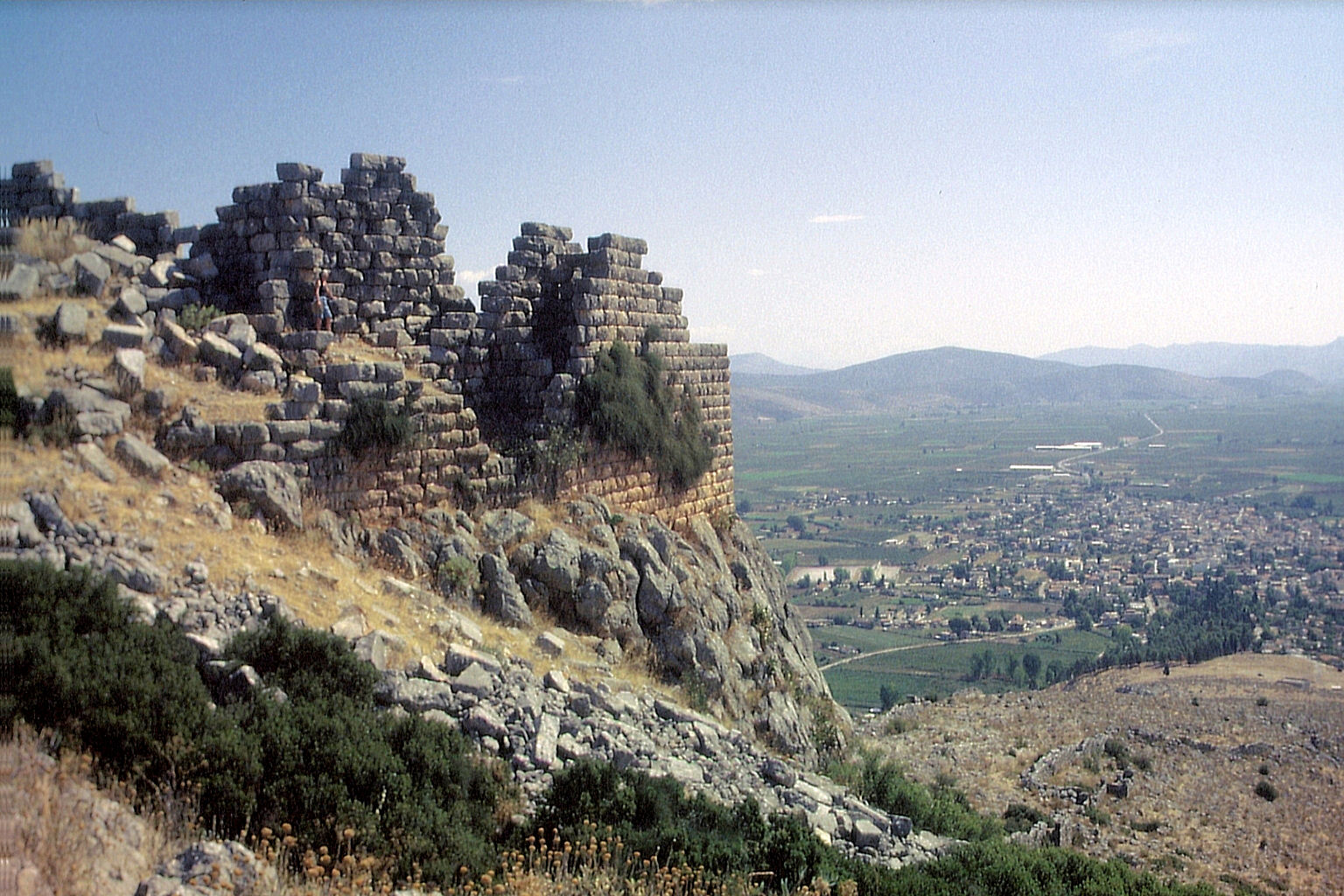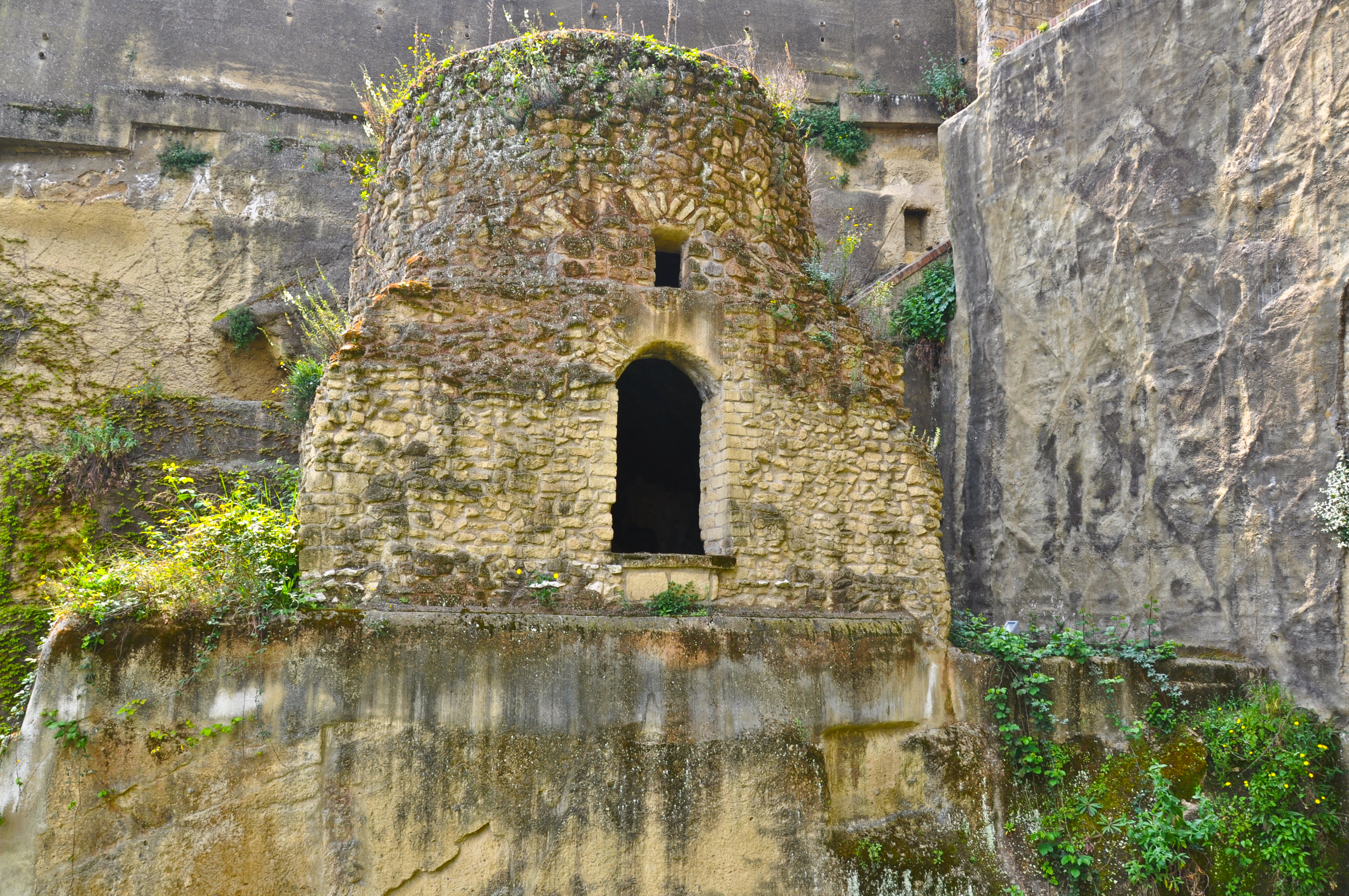|
Callirhoe (Oceanid)
In Greek mythology, Callirhoe (or Kallirhoe, Callirrhoe ) (Ancient Greek: Καλλιρό, Καλλιρρόη, or Καλλιρρόης means 'beautiful flow' or beautiful stream') was one of the Oceanids, daughters of the Titans: Oceanus and Tethys. Family Callirhoe had consorted with Chrysaor, Neilus, Poseidon and Manes. By Chrysaor, she became the mother of the monsters Geryon and Echidna while Chione was her daughter by the river-god of Egypt, Neilus. Meanwhile, to Poseidon, Callirhoe bore Minyas, founder of Minyan Orchomenus, and to Manes, Cotys, a king of Maeonia. Mythology Callirhoe was the naiad who became the companion of Persephone when the daughter of Demeter was abducted by the lord of the dead, Hades. She was one of the three ancestors of the Tyrians, along with Abarbarea and Drosera.Nonnus, ''Dionysiaca'', 40.535 ff Legacy Jupiter's moon Callirrhoe is named after her. Notes References * Aken, Dr. A.R.A. van. (1961). ''Elseviers Mythologische Enc ... [...More Info...] [...Related Items...] OR: [Wikipedia] [Google] [Baidu] |
Greek Mythology
Greek mythology is the body of myths originally told by the Ancient Greece, ancient Greeks, and a genre of ancient Greek folklore, today absorbed alongside Roman mythology into the broader designation of classical mythology. These stories concern the ancient Greek religion's view of the Cosmogony, origin and Cosmology#Metaphysical cosmology, nature of the world; the lives and activities of List of Greek deities, deities, Greek hero cult, heroes, and List of Greek mythological creatures, mythological creatures; and the origins and significance of the ancient Greeks' cult (religious practice), cult and ritual practices. Modern scholars study the myths to shed light on the religious and political institutions of ancient Greece, and to better understand the nature of mythmaking itself. The Greek myths were initially propagated in an oral tradition, oral-poetic tradition most likely by Minoan civilization, Minoan and Mycenaean Greece, Mycenaean singers starting in the 18th century&n ... [...More Info...] [...Related Items...] OR: [Wikipedia] [Google] [Baidu] |
Stesichorus
Stesichorus (; , ''Stēsichoros''; c. 630 – 555 BC) was a Greek Greek lyric, lyric poet native of Metauros (Gioia Tauro today). He is best known for telling epic stories in lyric metres, and for some ancient traditions about his life, such as his opposition to the tyrant Phalaris, and the blindness he is said to have incurred and cured by composing verses first insulting and then flattering to Helen of Troy. He was ranked among the nine lyric poets esteemed by the scholars of Hellenistic Alexandria, and yet his work attracted relatively little interest among ancient commentators, so that remarkably few fragments of his poetry now survive. As David Campbell notes: "Time has dealt more harshly with Stesichorus than with any other major lyric poet." Recent discoveries, recorded on Egyptian papyrus (notably and controversially, the Lille Stesichorus),P.J. Parsons, "The Lille Stesichorus", ''Zeitschreift für Papyrologie und Epigraphik'' Vol. 26 (1977), pages 7–36 have led to some i ... [...More Info...] [...Related Items...] OR: [Wikipedia] [Google] [Baidu] |
Orchomenus (Boeotia)
Orchomenus ( ''Orchomenos''), the setting for many early Greek mythology, Greek myths, is best known today as a rich archaeological site in Boeotia, Greece, that was inhabited from the Neolithic through the Hellenistic periods. It is often referred to as "Minyans, Minyan Orchomenus", to distinguish it from a later Orchomenus (Arcadia), city of the same name in Arcadia (region), Arcadia. Ancient history According to the founding myth of Orchomenos, its royal dynasty was established by the Minyans, who had followed their eponymous leader Minyas (mythology), Minyas from coastal Thessaly to settle the site. In the Bronze Age, during the fourteenth and thirteenth centuries BC, Orchomenos became a rich and important centre of civilisation in Mycenaean Greece and a rival to Thebes, Greece, Thebes. The palace with its frescoed walls and the great beehive tomb show the power of Orchomenos in Mycenaean Greece. A massive hydraulic undertaking drained the marshes of Lake Copais, Lake Kopa ... [...More Info...] [...Related Items...] OR: [Wikipedia] [Google] [Baidu] |
Minyans
In Greek mythology, the Minyans or Minyae ( Greek: Μινύες, ''Minyes'') were a group of legendary people who were the inhabitants of the city Orchomenus in Boeotia, and who were also associated with Thessaly. They were named after their eponymous ancestor, Minyas. In archaeology, the term "Minyans" has been applied to the Minyan ware excavated from Orchomenus, and is used to refer to an autochthonous group of Proto-Greek speakers inhabiting the Aegean region, though the degree to which the material culture in the prehistory of the area can be securely linked to the legendary people or language-based ethnicity has been subjected to debate and repeated revision. John L. Caskey's interpretation of his archaeological excavations conducted in the 1950s linked the ethno-linguistic " Proto-Greeks" to the bearers of the Minyan (or Middle Helladic) culture. More recent scholars have questioned or amended his dating and doubted the linking of material culture to linguistic ... [...More Info...] [...Related Items...] OR: [Wikipedia] [Google] [Baidu] |
Minyas (mythology)
In Greek mythology, Minyas (; Ancient Greek: Μινύας) was the founder of Orchomenus, Boeotia.Apollonius Rhodius, 3.1093 ff. Family As the ancestor of the Minyans, a number of Boeotian genealogies lead back to him, according to the classicist H.J. Rose. Accounts vary as to his own parentage: * Orchomenus and Hermippe, his real father being Poseidon; * Poseidon either by (1) the Oceanid Callirhoe;Scholia ad Pindar, ''Olympian Odes'14.5c Tzetzes ad Lycophron875/ref> (2) Tritogeneia, daughter of Aeolus; (3) Euryanassa, daughter of HyperphasScholia ad Homer, ''Odyssey'11.326= Hesiod, fr. 62 ( Loeb edition, 1914) or lastly, Chrysogone, daughter of Almus; * father is only mentioned as (1) Aeolus; (2) Sisyphus; (3) Chryses, son of Poseidon and Chrysogeneia; (4) Eteocles or (5) Ares (6) Aleus and lastly (7) Halmus (Almus). Minyas was married to Tritolenia (TritogeneiaScholia ad Pindar, ''Pythian Odes'4.122 Tzetzes ad Lycophron875/ref>), Clytodora, or Phanosyra, da ... [...More Info...] [...Related Items...] OR: [Wikipedia] [Google] [Baidu] |
Virgil
Publius Vergilius Maro (; 15 October 70 BC21 September 19 BC), usually called Virgil or Vergil ( ) in English, was an ancient Rome, ancient Roman poet of the Augustan literature (ancient Rome), Augustan period. He composed three of the most famous poems in Latin literature: the ''Eclogues'' (or ''Bucolics''), the ''Georgics'', and the Epic poetry, epic ''Aeneid''. A number of minor poems, collected in the ''Appendix Vergiliana'', were attributed to him in ancient times, but modern scholars generally regard these works as spurious, with the possible exception of a few short pieces. Already acclaimed in his own lifetime as a classic author, Virgil rapidly replaced Ennius and other earlier authors as a standard school text, and stood as the most popular Latin poet through late antiquity, the Middle Ages, and early modernity, exerting inestimable influence on all subsequent Western literature. Geoffrey Chaucer assigned Virgil a uniquely prominent position among all the celebrities ... [...More Info...] [...Related Items...] OR: [Wikipedia] [Google] [Baidu] |
Aeneid
The ''Aeneid'' ( ; or ) is a Latin Epic poetry, epic poem that tells the legendary story of Aeneas, a Troy, Trojan who fled the Trojan War#Sack of Troy, fall of Troy and travelled to Italy, where he became the ancestor of the Ancient Rome, Romans. Written by the Roman poet Virgil between 29 and 19 BC, the ''Aeneid'' comprises 9,896 lines in dactylic hexameter. The first six of the poem's twelve books tell the story of Aeneas' wanderings from Troy to Italy, and the poem's second half tells of the Trojans' ultimately victorious war upon the Latins (Italic tribe), Latins, under whose name Aeneas and his Trojan followers are destined to be subsumed. The hero Aeneas was already known to Greco-Roman legend and myth, having been a character in the ''Iliad''. Virgil took the disconnected tales of Aeneas' wanderings, his vague association with the foundation of Ancient Rome, Rome and his description as a personage of no fixed characteristics other than a scrupulous ''pietas'', ... [...More Info...] [...Related Items...] OR: [Wikipedia] [Google] [Baidu] |
Commentary (philology)
In philology, a commentary is a line-by-line or even word-by-word explication usually attached to an edition of a text in the same or an accompanying volume. It may draw on methodologies of close reading and literary criticism, but its primary purpose is to elucidate the language of the text and the specific culture that produced it, both of which may be foreign to the reader. Such a commentary usually takes the form of footnotes, endnotes, or separate text cross-referenced by line, paragraph or page. Means of providing commentary on the language of the text include notes on textual criticism, syntax and semantics, and the analysis of rhetoric, literary tropes, and style. The aim is to remove, lessen or point out linguistic obstacles to reading and understanding the text. If a text is historical, or is produced within a culture assumed to be of limited familiarity to a reader, a broader range of issues may require elucidation. These include, but are by no means limited to, ... [...More Info...] [...Related Items...] OR: [Wikipedia] [Google] [Baidu] |
Maurus Servius Honoratus
Servius, distinguished as Servius the Grammarian ( or ), was a late fourth-century and early fifth-century grammarian. He earned a contemporary reputation as the most learned man of his generation in Italy; he authored a set of commentaries on the works of Virgil. These works, ("Exposition on Three Works of Virgil"), ("Commentaries on Virgil"), ("Commentaries on the Works of Vergil"), or ("Commentaries on the Poems of Virgil"), constituted the first incunable to be printed at Florence, by Bernardo Cennini, in 1471. In the ''Saturnalia'' of Macrobius, Servius appears as one of the interlocutors; allusions in that work and a letter from Symmachus to Servius indicate that he was not a convert to Christianity. Name The name Servius also appears as Seruius owing to the unity of the Latin letters V and U from antiquity until as late as the 18th century. Many medieval manuscripts of Servius's commentaries give him the praenomen Marius or Maurus and the cognomen Honoratu ... [...More Info...] [...Related Items...] OR: [Wikipedia] [Google] [Baidu] |
Nilus (mythology)
In Greek mythology, Nilus (; ) is one of 3,000 river gods, who represent the god of the Nile river itself. Nilus is the son of the water gods Oceanus and Tethys. Family Nilus was one of 3,000 river gods children of the Titans Oceanus and his sister-wife Tethys. He was father to several children, of these included Memphis (mother of Libya by Epaphus a king of Egypt). His granddaughter Libya in turn became mother to Belus and Agenor. These sons then married (presumably) younger daughters of his son Nilus named Anchiroe Apollodorus2.1.4/ref> and Telephassa, respectively. A daughter Chione was said to be borne to Nilus and Callirhoe, an Oceanid. His other children include: Argiope, Anippe, Eurryroe, Europa Tzetzes''Chiliades'' 7.37 p. 368-371/ref> and possibly Caliadne, Polyxo and Thebe.Scholia ad Homer, ''Iliad'' 9.383 Mythology Parentage * Hesiod, ''Theogony'': * Hyginus, ''Fabulae:'' Offspring * Apollodorus, '' Bibliotheca'': * Apollodorus, '' B ... [...More Info...] [...Related Items...] OR: [Wikipedia] [Google] [Baidu] |
Egypt
Egypt ( , ), officially the Arab Republic of Egypt, is a country spanning the Northeast Africa, northeast corner of Africa and Western Asia, southwest corner of Asia via the Sinai Peninsula. It is bordered by the Mediterranean Sea to northern coast of Egypt, the north, the Gaza Strip of Palestine and Israel to Egypt–Israel barrier, the northeast, the Red Sea to the east, Sudan to Egypt–Sudan border, the south, and Libya to Egypt–Libya border, the west; the Gulf of Aqaba in the northeast separates Egypt from Jordan and Saudi Arabia. Cairo is the capital, list of cities and towns in Egypt, largest city, and leading cultural center, while Alexandria is the second-largest city and an important hub of industry and tourism. With over 109 million inhabitants, Egypt is the List of African countries by population, third-most populous country in Africa and List of countries and dependencies by population, 15th-most populated in the world. Egypt has one of the longest histories o ... [...More Info...] [...Related Items...] OR: [Wikipedia] [Google] [Baidu] |
Chione (Greek Myth)
In Greek mythology, Chione (; , from ) may refer to the following women: * Chione, daughter of Boreas and mother of Eumolpus by Poseidon. * Chione, daughter of Daedalion, and mother of Philammon and Autolycus by Apollo and Hermes respectively.Ovid, ''Metamorphoses'' 11.301 She may be the same with Philonis and Leuconoe. * Chione, daughter of Callirrhoe, who was changed into a snow cloud. * Chione, daughter of Arcturus, who was abducted by Boreas and bore him three sons. * Chione, the naiad mother of Priapus by Dionysus. * Chione, one of the Niobids. * Chione, a nymph who gave her name to the island of Chios in some versions.Pliny the Elder, ''Naturalis Historia'5.38/ref> Might be identical with one of the other Chiones above. Notes References * Conon'', Fifty Narrations, surviving as one-paragraph summaries in the Bibliotheca (Library) of Photius, Patriarch of Constantinople'' translated from the Greek by Brady KieslingOnline version at the Topos Text Project.* ... [...More Info...] [...Related Items...] OR: [Wikipedia] [Google] [Baidu] |





